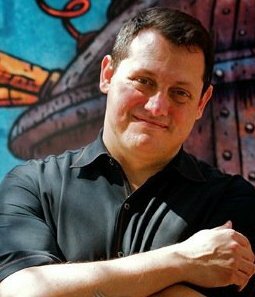Today is the international celebration of Mandela Day – an annual celebration of Nelson Mandela’s life and a global call to action for people to recognize their individual ability to make an imprint and change the world around them.
Mary Jane Horton, an Americorps VISTA member working with Volunteers of America, their RSVP program in Carver County and also with the Minnesota Association for Volunteer Administration as an Outreach Coordinator for volunteer managers across the state has submitted today’s guest post on the subject.
Do you agree with her position that sixty seven minutes of service is too little to honor Nelson Mandela’s legacy?
“Nelson Mandela Day, a day of service in honor of an international hero, sets the world stage for volunteerism on July 18th, 2010.”
London’s 2008 birthday celebration for Nelson Mandela in Hyde Park attracted international attention on a large scale as musicians and performers gathered to honor the human embodiment of universal hope and change.
On this day, the former prisoner of South Africa’s apartheid government and Nobel Peace prize winning fighter for social justice and freedom for all, declared
“It is time for the next generations to continue our struggle against social injustice and for the rights of humanity. It is in your hands.”
 Fast forward one year later to July 18, 2009, Mandela’s 90th birthday, a celebration in New York City for the first ever Nelson Mandela Day.
Fast forward one year later to July 18, 2009, Mandela’s 90th birthday, a celebration in New York City for the first ever Nelson Mandela Day.
As stated on the website MandelaDay.org, “Mandela Day is an annual celebration of Nelson Mandela’s life and a global call to action for people to recognize their individual ability to make an imprint and change the world around them.”
What better time to get involved than now when national volunteering is at an all time high and non profits are looking to optimize their resources with new innovation?
This month the World Cup was hosted on African soil for the first time in history, an incredible honor for the country of South Africa and for their most historic leader, Nelson Mandela.
The opening ceremony in Johannesburg honored this man who worked to unite the country during times of significant racial oppression.
The justice that Mandela fought for is now being honored on an annual basis through the creation of Nelson Mandela Day, to occur each year on his birthday.
The message of this international day of service focuses on the 67 years of service that Mandela spent fighting for equality and justice and is meant to inspire people to spend 67 minutes of this day in serving a local charity.
While it is a noble cause to honor this great hero, 67 minutes seems an insufficient amount to honor such a legendary ambassador of service.
As part of the Minnesota Senior Corps, we work with exemplary volunteers in our communities on a daily basis.
Individuals dedicated to serving their communities through our RSVP, Foster Grandparent and Senior Companion programs volunteer across a wide spectrum of service areas, impacting young children and older adults alike.
The Twin Cities are consistently ranked number one in having the most volunteer involvement when compared to other major cities in the United States.
Volunteer organizations like HandsOn Twin Cities, volunteer management resources provided by leading experts at Minnesota Association for Volunteer Administration and helpful search engines like VolunteerMatch.org, provide those within close distance of the Twin Cities a wide variety of easily accessible volunteer opportunities.
For potential volunteers in other locations throughout Minnesota, however, these opportunities aren’t as easily identified.
Minnesota consistently ranks in the top three for highest percentage of residents involved in volunteering with a total of 1.5 million Minnesota residents volunteering, according to data averaged from 2007-2009.
The study also looks at different age groups, income, education and employment rates.
States with higher unemployment rates had a lower number of volunteers and in states like Minnesota with a low unemployment rate of 7.6% when compared to the national rate of 8.5%, more residents were involved as volunteers than in states with a higher unemployment rate.
Incidentally, states like Minnesota with higher volunteer rates, also have lower rates of heart disease.
We all know that these trends didn’t come about because we limited ourselves to one day or 67 minutes of service.
In order to make an impact in our communities, individuals need to be mobilized daily to inspire change in partnership with area non profits and agencies working to help those in need.
After all, isn’t that what building a healthy and thriving community is all about?
The more opportunities we have to get involved in improving our neighborhoods, the more we will be empowered as local change agents.
The more we are empowered and fulfilled in our local environments, the more likely we will be to actively age in place and build stronger communities together.
For older adults 55 and over, MN Senior Corps is looking to engage life experience while we partner with local organizations in serving our communities.
Mobilizing individuals and utilizing their strengths and passions is the key to building a stronger and healthier Minnesota.
365 days a year.

 Michael Nealis spoke at the 2010 National Conference on Volunteering and Service about how nonprofits can use blogs to reach out to their communities. This a the first of three posts based on his session notes.
Michael Nealis spoke at the 2010 National Conference on Volunteering and Service about how nonprofits can use blogs to reach out to their communities. This a the first of three posts based on his session notes.


 Today’s guests post was written by Kimberly Coburn, a copywriter in Atlanta with an interest in sustainability, local food, and daydreaming about her eventual homestead, who helped organize Atlanta’s “
Today’s guests post was written by Kimberly Coburn, a copywriter in Atlanta with an interest in sustainability, local food, and daydreaming about her eventual homestead, who helped organize Atlanta’s “
 by Jeannie Blocton Bell, Director, E-Learning Initiatives,
by Jeannie Blocton Bell, Director, E-Learning Initiatives, 
 locally.
locally. 3. Empower communities to help themselves
3. Empower communities to help themselves

 The report, (which Heather McLeod Grant and Katherine Fulton have made eminently readable) outlines some of the key lessons KaBOOM! has learned since their experimentation online began.
The report, (which Heather McLeod Grant and Katherine Fulton have made eminently readable) outlines some of the key lessons KaBOOM! has learned since their experimentation online began.
 KaBOOM! learned that it needed to provide ‘high touch’ support to online volunteer leaders who took on the task of planning a local playground build.
KaBOOM! learned that it needed to provide ‘high touch’ support to online volunteer leaders who took on the task of planning a local playground build. Specifically, KaBOOM! is developing an online, points-based recognition program for active volunteers and they’ve discovered that the chance of winning even a relatively small financial grant for a playground project can serve as a significant incentive.
Specifically, KaBOOM! is developing an online, points-based recognition program for active volunteers and they’ve discovered that the chance of winning even a relatively small financial grant for a playground project can serve as a significant incentive.
 Like KaBOOM!, HandsOn Network cares about increasing the number of people volunteering in the world.
Like KaBOOM!, HandsOn Network cares about increasing the number of people volunteering in the world.
 Drew, a cancer survivor and major geek as well, was already passionate about
Drew, a cancer survivor and major geek as well, was already passionate about 

